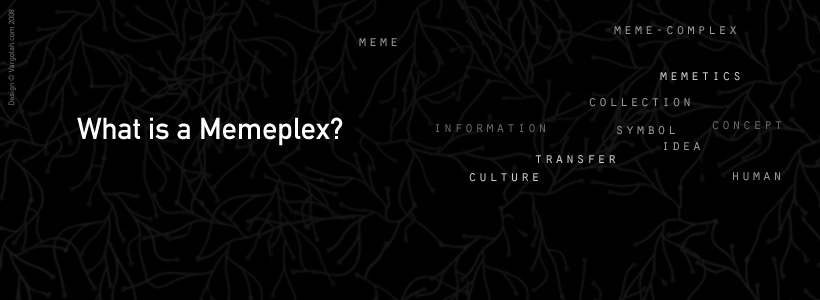A further criticism has been the fuzziness of the meme concept: how big is a meme? Just the first four notes of Beethoven’s Fifth, or the whole symphony? Maybe both? It is true that the concept needs to be made sharper.Here is Martin Gardner (2000) writing:
Given that there are cultural elements called memes, how do we distinguish a single meme, such as the "V for victory" gesture, from a vast bundle of memes, such as those that constitute a religion? To answer this question, memeticists have invented the word "memeplex" to denote a cluster of memes. Hilarious debates have raged over how to draw lines separating memes from memeplexes. For example, the first four notes of Beethoven's Fifth Symphony (da-da-da-dum), as Blackmore records them, clearly are a meme because millions of people can hum those four notes without being able to hum the entire symphony. The symphony is, of course, also a meme, but best described as a memeplex because it consists of smaller memes. The question of where to mark the boundaries along meme spectrums is not easy.Martin Gardner (2000) seemed to think that this was a significant problem. He went on to write:
All of science is a memeplex, but it is hopeless to decide when a scientific assertion becomes small enough to be called an individual meme. Is the fact of evolution a meme or a memeplex? Roman Catholicism is a monstrous memeplex. What aspects of it deserve to be called memes? The doctrine of the Immaculate Conception? Or is this a memeplex made up of such memes as original sin and the Virgin Birth? Should an entire mass be called a meme or a memeplex? The gesture of crossing the heart is surely a meme, but we encounter great difficulty sorting out the memes that make up a doctrine as complicated as, say, the Atonement.Critics contrast memetics with genetics in this area - where, supposedly, genes have clearly defined start and endpoints (defined by triplet codon sequences), while memes do not.
This analogy isn't really valid. Start and stop codons are concepts from developmental biology - which have little to do with genetics. Genetics has its own conceptions of what counts as a gene - in the form of "mutons" and "recons", for example - and those don't tend to have clearly-defined start and end points.
Memetics has the term "memeplex" to refer to collections of memes. So the question arises of: where do memes turn into memeplexes?

This is also an area where memetics appears to differ slightly from the terminology of Boyd and Richerson - who appear to lack much in the way of specific terminology to distinguish between memes and memeplexes.
Brent Silby (2008) has attempted to answer the question of how big a meme is:
The best way to think of a memetic unit is to consider it to be the smallest idea that copies itself completely while remaining intact. So the first four notes of Beethoven’s 5th is a meme, but the first 3 is not.John Wilkins (1998) has attempted to answer this question too:
A meme is the least unit of sociocultural information relative to a selection process that has favourable or unfavourable selection bias that exceeds its endogenous tendency to change.Wilkins defines neutral memes out of existence. That seems to be a dubious move.
I think this is more of a "how many hairs make a beard?" issue. It is useful to distinguish the bearded from the beardless - but there is not too much profit to be made by attempting to place a fine line between the bearded and beardless conditions by using a specific definition.
Indeed, in my book on the subject, I skip over the issue of how big memes are in my meme definition entirely - defining memes to be sections of heritable cultural information. While that is neat, it doesn't really capture popular usage of the term, or help with much with distinguishing memes from memeplexes.
I think the isssue of how big memes are can be dealt with reasonably well by using heuristics. Then it is possible to say something useful about where "memes" end and "memeplexes" begin.
The first thing to say is that memes are what meme frequency analysis studies. If something occurs at too high a frequency describing it as a "meme" starts to sound a bit strange. The same thing happens in genetics - where few would describe a nucleotide as being a "gene". Similarly too low a frequency strongly suggests that something is not a meme. Again there's a similar phenomenon in genetics - where chromosomes tend not to be described as being "genes". Then, some heuristics:
- If a piece of cultural information can't be divided into two or more smaller memes, then it's a meme, not a memeplex.
- If a piece of cultural information can be split into two or more memes that occur at a much higher frequency that the original, then it's memeplex.
There are other areas where a similar phenomenon crops up. Criminology has the concepts of "clue" and "clues" - however sometimes whether you have one clue or two in ambiguous. Linguistics has concepts of "phoneme" and "phonemes" - but again there can be cases where whether you have one phoneme or two is ambiguous.










No comments:
Post a Comment